From inside (document excerpt):
58EFA Horizontal Gas-Fired Induced-Combustion Furnace Installation, Start-up, and Operating Instructions Sizes 050–125, Series 120 NOTE: Read the entire instruction manual before starting the installation. SAFETY CONSIDERATIONS Installing and servicing heating equipment can be hazardous due to gas and electrical components. Only trained and qualified personnel should install, repair, or service heating equipment.
Untrained personnel can perform basic maintenance functions such as cleaning and replacing air filters. All other operations must be performed by trained service personnel. When working on heating equipment, observe precautions in the literature, on tags, and on labels attached to or shipped with the unit and other safety precautions that may apply. Follow all safety codes, including NFPA 54/ANSI Z223.1-1992, National Fuel Gas Code. In Canada, refer to the current edition of the National Standard of Canada CAN/CGA-B149 Installation Codes. Wear safety glasses and work gloves. Have a fire extinguisher available during start-up and adjustment procedures and service call. Recognize safety information. This is the safety-alert symbol. When you see this symbol on the furnace and in instructions or manuals, be alert to the potential for personal injury. Understand the signal word DANGER, WARNING, or CAUTION. These words are used with the safety-alert symbol. DANGER identifies the most serious hazards which will result in severe personal injury or death. WARNING signifies hazards that could result in personal injury or death. CAUTION is used to identify unsafe practices which would result in minor personal injury or product and property damage. INTRODUCTION The design of the 58EFA Horizontal Gas-Fired InducedCombustion Furnace is A.G.A./C.G.A. certified as a Category I furnace for natural and propane gases and for installation in alcoves, basements, crawl spaces, utility rooms, and attics. The design of the horizontal gas-fired furnace is A.G.A./C.G.A. certified for installation on noncombustible floors. This furnace may be installed on combustible wood flooring, however, it may not be installed directly on carpeting, tile, or other combustible material other than wood. The design of this furnace line is not A.G.A. certified for installation in recreational vehicles, manufactured housing (mobile homes), or outdoors. Before installing this furnace, refer to the current edition of the National Fuel Gas Code NFPA 54-1992/ANSI Z223.1-1992 which is available from the National Fire Protection Association Inc., Batterymarch Park, Quincy, MA 02269, American Gas Association, 1515 Wilson Boulevard, Arlington, VA 22209, or from Literature Distribution. Installations must comply with the regulations of the serving gas supplier and the local building, heating, plumbing, or other codes in effect in the area in which the installation is made. In the absence of local codes, the installation must conform with the National Fuel Gas Code, NFPA No. 54-1992/ANSI Z223.1-1992. Canadian installations must be made in accordance with ® ama CANADIAN GAS ASSOCIATION A PP R O VED R CAN/CGA-B149 Installation Codes and authorities having jurisdiction. These instructions cover minimum requirements for a safe installation and conform to existing national standards and safety codes. In some instances, these instructions exceed certain local codes and ordinances, especially those that may not have kept pace with changing residential construction practices. Carrier requires these instructions as a minimum for a safe installation. Application of this furnace should be indoors with special attention given to vent sizing and material, gas input rate, air temperature rise, and unit sizing. Improper installation or misapplication of the furnace can require excessive servicing or cause premature component failure. This furnace is designed for a minimum continuous return-air temperature of 60°F db or intermittent operation down to 55°F db such as when used with a night setback thermostat. Return-air temperature must not exceed a maximum of 85°F db. Improper installation, adjustment, alteration, service, maintenance, or use can cause carbon monoxide poisoning, explosion, fire, electrical shock, or other conditions which may cause personal injury or property damage. Consult a qualified installer, service agency, local gas supplier, your distributor, or your branch for information or assistance.


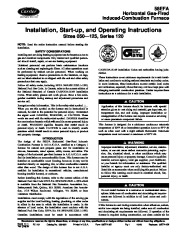 Carrier Owners Manual - 1 of 14
Carrier Owners Manual - 1 of 14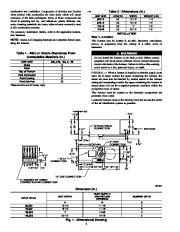 Carrier Owners Manual - 2 of 14
Carrier Owners Manual - 2 of 14 Carrier Owners Manual - 3 of 14
Carrier Owners Manual - 3 of 14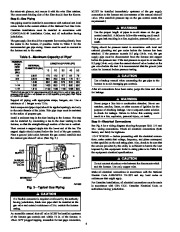 Carrier Owners Manual - 4 of 14
Carrier Owners Manual - 4 of 14 Carrier Owners Manual - 5 of 14
Carrier Owners Manual - 5 of 14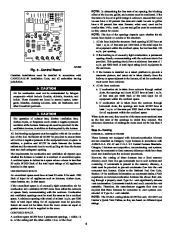 Carrier Owners Manual - 6 of 14
Carrier Owners Manual - 6 of 14 Carrier Owners Manual - 7 of 14
Carrier Owners Manual - 7 of 14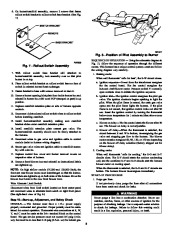 Carrier Owners Manual - 8 of 14
Carrier Owners Manual - 8 of 14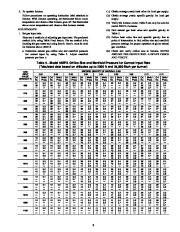 Carrier Owners Manual - 9 of 14
Carrier Owners Manual - 9 of 14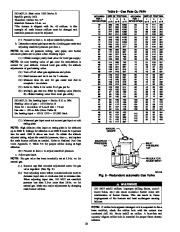 Carrier Owners Manual - 10 of 14
Carrier Owners Manual - 10 of 14